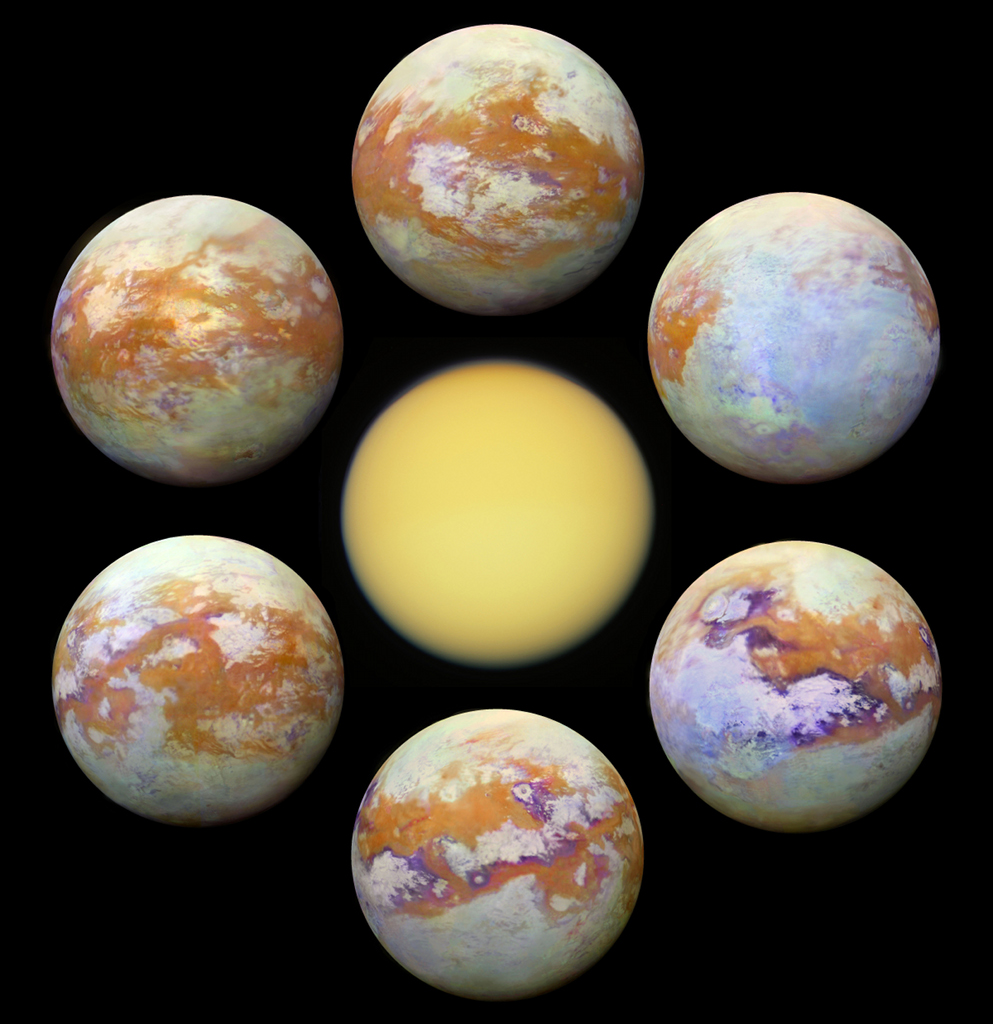2020年8月20日
Seeing Titan
Image Credit: VIMS Team, U. Arizona, U. Nantes, ESA, NASA
Explanation: Shrouded in a thick atmosphere, Saturn’s largest moon Titan really is hard to see. Small particles suspended in the upper atmosphere cause an almost impenetrable haze, strongly scattering light at visible wavelengths and hiding Titan’s surface features from prying eyes. But Titan’s surface is better imaged at infrared wavelengths where scattering is weaker and atmospheric absorption is reduced. Arrayed around this visible light image (center) of Titan are some of the clearest global infrared views of the tantalizing moon so far. In false color, the six panels present a consistent processing of 13 years of infrared image data from the Visual and Infrared Mapping Spectrometer (VIMS) on board the Cassini spacecraft. They offer a stunning comparison with Cassini’s visible light view.
Experts Debate: How will humanity first discover extraterrestrial life?
Tomorrow’s picture: unwinding M51
透视土卫六
影像提供: VIMS Team, U. Arizona, U. Nantes, ESA, NASA
说明: 披覆厚重大气的土星最大卫星─土卫六,极难一窥其真实面貌。它高层大气中的悬浮微粒,形成几乎无法穿过的雾霾,强烈散射可见光,让土卫六的表面特征隐不可见。不过,红外光受到的大气散射和吸收较弱,较能解析土卫六的表面。在上图中心可见光照片周围的这些照片,是这颗迷人卫星至今最清晰的红外影像。这六幅假色影像,来自使用相同影像技术,处理卡西尼太空船的可见和红外光成像光谱仪(VIMS)在13年期间记录的数据。它们和卡西尼号的可见光影像,形成非常鲜明的对比。
专家辩论:人类将如何首先发现外星生命?
明日的图片: unwinding M51




宇宙妙不可及!
万物皆奇迹,乃至黑暗与寂静…我已懂得,无论境遇,泰然处之、
好美的星球啊
Words full of dreams